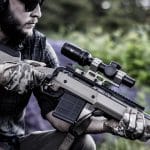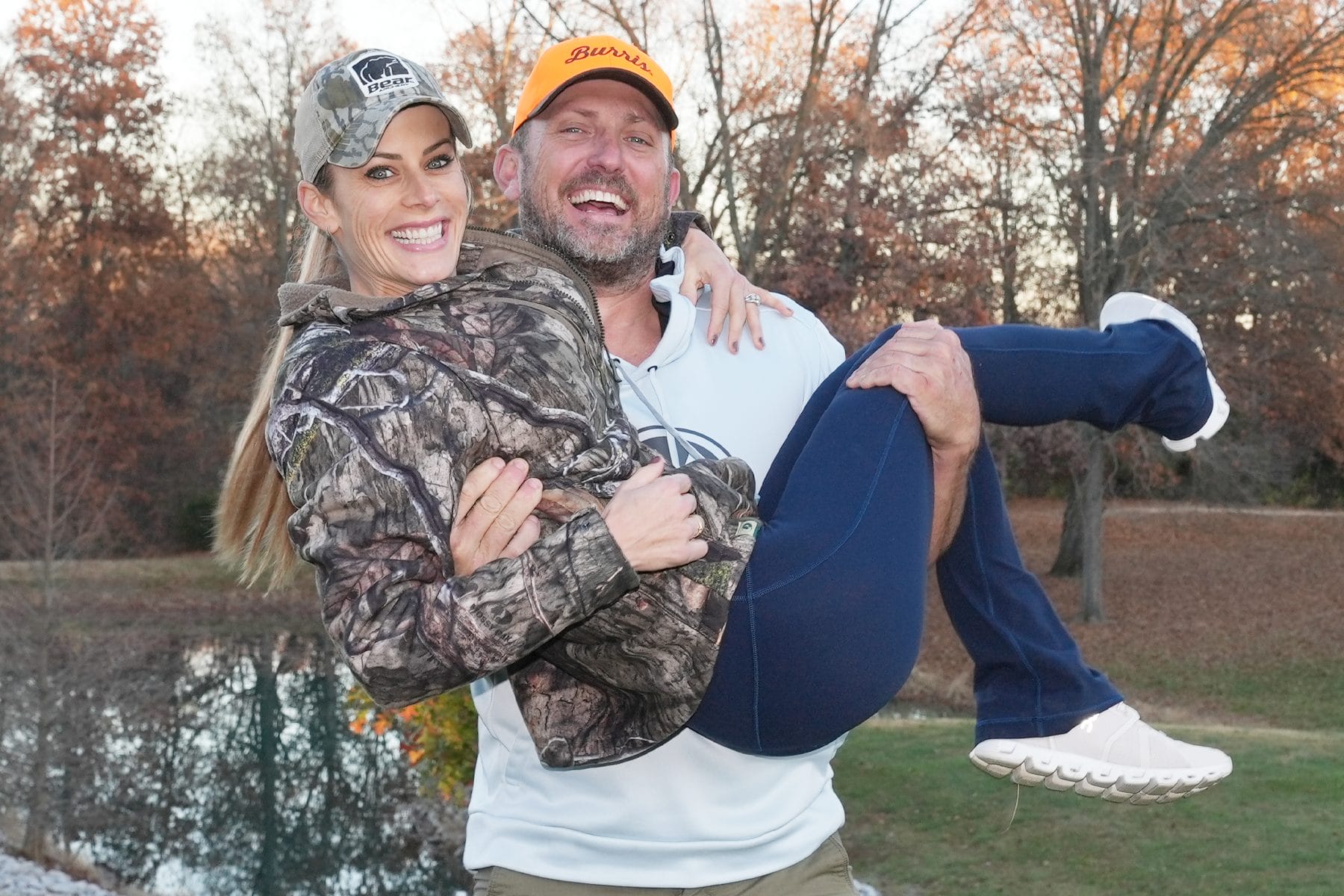
Policing in America once was a job that was put on a pedestal. Police were honored by most in the community and revered as a position not only of authority, but of a friend and advocate for good. Think of classic 1960’s black-and-white television shows like the much-loved The Andy Griffith Show. So, what happened, and how did we get to where we are today? Rener Gracie – the thin blue line.
Well to start, society has changed. And police training in America hasn’t kept up with the times. In a speech delivered to his peers several years back, Maj. Jake King of the Marietta, Georgia, Police Department (MPD) foretold of the position police would be in today. “I was speaking to department heads from across the country when I said, one day, you will only be able to enforce the law on people who want it enforced on them” King recalls. “For instance, many departments have banned police car chases. That means those that get tickets, are only the individuals who voluntarily pull over and don’t run. Today, that same thing applies to those who comply with officers when they show up to a disturbance call in some cities”.

Maj. King underwent 420 hours of training to join the force in the state of Georgia (each state differs). Twenty-three years later, police are still receiving the same number of training hours in the state with a curriculum that hasn’t evolved very much. To top it off, there is no national requirement to undergo any “defensive tactics” training. In Georgia, though, there is no requirement for defensive tactics, the state average is four hours annually. In states like California, it’s less, averaging four hours every two years and some states averaging zero. But not Maj. King’s department, he now insists on four hours minimum per month, but more on that to come.
Speaking about the state of Georgia, King points out the required firearms qualification is actually just to “qualify”. This occurs once a year on a state-required course, and there is no minimum hours required to practice. Which means officers could train as little as one hour per year. To note, MPD requires two qualifications and 16 hours per year of training. In short, when police are confronted with a non-compliant suspect, they often times experience what is referred to as an amygdala hijack.
To explain scientifically: when you sense something, that sensory information first heads to the thalamus, which acts as your brain’s relay station. The thalamus then relays the information to the neocortex (the “thinking brain”). From there, it is sent to the amygdala (the “emotional brain”) which produces the appropriate emotional response.

However, when faced with a threatening situation, the thalamus sends sensory information to both the amygdala and the neocortex. If the amygdala senses danger, it makes a split-second decision to initiate the fight-or-flight response before the neocortex has time to overrule it. In some cases, this can be triggered by as much as a shove for under prepared officers.
So, what does all that mean? With no baseline in “Defensive Tactics,” an officer is going to naturally fight back. And with no training, it will likely result in excessive physical force or even worse, considering limited firearms training, baseline will be weapons drawn and possibly used. To be clear, this is not to blame or make excuses for police. This is just the reality of what happens without adequate training when confronted by a suspect who has no fear of or respect for the officer and who may also be high on drugs while committing the crime the officer is responding to.
“How can we ever expect officers to respond with the level of professionalism the general public now expects, if they are under prepared for confrontation? It won’t happen, especially if we continue to defund departments,” says King.

Over the last two years, we have been seeing civil unrest even when faced with the facts. And despite whether or not the level of force was justified. “We only can do what society deems acceptable,” King says, “And everybody is recording everything, so the chances of a video going viral, are high. Take for instance a video that went viral in my department. A suspect was choking a female officer, and the other arresting officers became physical. There actions were completely justified given the suspect’s attack. But that didn’t matter. A bystander had recorded the altercation, capturing it from an angle that didn’t reveal the officer being attacked. The suspect’s back was to the camera, and all that was posted was MPD beating up a suspect. At face value, it looked horrible. Our body cameras revealed what really was happening, but that didn’t seem to matter. That’s the problem. Rarely do these viral videos tell the full story, and public reaction and policies are made based upon them”.
Entering the ring as a solution, meet Rener Gracie. Gracie is the grandson to the Grandmaster Hélio Gracie and the second-eldest son of Grandmaster Rorion Gracie. These were among some of the first family members to bring Gracie jiu-jitsu to the United States in 1978. The Gracies were also instrumental in creating the wildly popular UFC. Rener has spent the majority of his life training and being trained in the art of Brazilian jiu-jitsu or BJJ. It is important to note here that BJJ is a method of fighting that emphasizes grappling and submission. Whereas other martial arts incorporate violent strikes, BJJ does not.

“In the early 1990s, law enforcement started approaching my family to teach them empty hand controls and arrest and control tactics that would allow officers greater capabilities with a lower amount of force,” says Rener Gracie. “Since then, we have been working with police.”
So how is a BJJ black belt going to solve the problem of perceived excessive force? The Gracies have custom designed a program for law enforcement referred to as Gracie Survival Tactics or GST, that breeds officer confidence and capability in stressful situations. “GST is a week-long certification course where officers are sent to us for 40 hours of training. They get certified in GST, and they return to their agency and teach techniques to their colleagues,” Rener says with excitement. “Regular BJJ training drastically lowers the chance of an amygdala hijack and offers scalable force for the officers to use while apprehending a non-compliant suspect.”
But here’s the rub. When that officer returns from training, some Chiefs only allow that BJJ-trained officer to train his peers up to the state requirement. “Even though we train the officer to a life-changing level in that 40 hours, when they return home, they can only train their colleagues to the permitted level. So, often times the whole system falls on its face. Every state is different, and every department within the state is different. That’s what people need to understand. There is no American policing, there are American police departments, but every single one is as divided as you could imagine when it comes to training and tactics. Some departments are stuck in the ‘80s, providing no more than four hours of training per year. I have beginner students, white belts, who train four hours in their first week! So here we are expecting officers who are being thrown into danger, completely over their heads, to do their jobs with less force,” says Rener Gracie.

That hasn’t stopped him. Rener Gracie is a passionate man. His love for the men and women of law enforcement shines through his characteristic smile. Full of eagerness, Gracie seems to burst at the seams when it comes to his sport and especially when it is used successfully and with confidence by bearers of the badge. Married to three-time WWE Diva Champion, Eve Torres, they together operate Gracie University along with 180 additional gyms throughout the United States. Additionally, the Gracies have partnered with countless other privately owned BJJ gyms to deliver GST training to departments in even the smallest communities.
“When an officer reaches the amygdala hijack more rapidly than he or she needs to, that’s when bad things happen. The brain does not process repercussions for their actions, there are simply actions for survival. So, the only question is how do we ensure officers do not reach the amygdala hijack? There is only one answer: you increase their capacity for handling high stress situations so that the threshold of chaos necessary to trigger a hijack is much higher. What I suggest doing is require at least one hour of BJJ training per week,” states Rener Gracie. “Every officer in America, no questions asked.”
The GST class has been active for the last 20 years, and the Gracies have advised this to the hundreds of agencies they have come in contact with, but they only have control over what they train at their academy not what departments choose to do with the information afterward or the politics that surround their decisions.

“Marietta, Georgia, has been a GST-certified agency for 11 years, and we had constantly hounded them to train more. Well, after that video went viral, as a result, Maj. King who at the time was training at Borges Brazilian jiu-jitsu, had enough and knew BJJ was the way. He said, ‘forget four hours of training a year, how do we expect change if we don’t provide change?’ So, he did a test. He chose to require all new hires to enter the BJJ training at a local school, and as luck would have it, a natural control and experiment group was built,” says Rener Gracie.
According to Maj. King, after five months of training, the number-one word recorded upon exit interview at the academy, was “confidence.” They became so used to close-quarter altercations, they weren’t experiencing the amygdala hijack the other non-trained officers were. And with confidence, control was achieved.
So even as the media pumps society with doubt and anger towards police, and ignorant politicians make feel-good decisions to “defund the police,” or like some mayors are doing, replacing traditional police officers with “Community Solutions Officers,” the facts don’t lie.

Data was collected for the last two years in Marietta, and the results are eye opening. To date, 95 of the 145 sworn MPD officers have opted in to the BJJ program, and 50 officers have not. The officers who averaged at least (1) BJJ class per week, are referred to as “BJJ officers.” Here is a summary of the data collected thus far:
Training injuries: MPD has had 95 officers attend over 2,600 civilian-operated BJJ classes with only one reported training injury.
Taser deployments: Since the inception of the program, non-BJJ officers used their Tasers in 77% of use-of-force (UOF) incidents while BJJ officers used their Taser in54% of UOF incidents (85% of which were used to stop a foot pursuit—not to end the physical altercation). That is a 23% reduction in Taser deployments in the BJJ officer group.
Use-of-force (UOF) injuries to officers: In the 18 months prior to instituting mandatory BJJ training, 29officers were injured while carrying out arrests. In the 18 months after instituting mandatory BJJ training for new hires, 15officers were injured while carrying out arrests. That is a 48% reduction in officer injuries department wide. Most interestingly to note, none of the injured officers were BJJ officers.

Use-of-force injuries to suspects: In 2020, there were 33 UOF incidents involving MPD officers: 20 incidents involving non-BJJ officers, and 13 incidents involving BJJ officers. In the 20incidents involving non-BJJ officers, the suspect sustained injuries requiring hospitalization 65% of the time (13 incidents of suspect hospitalization). In the 13 incidents involving BJJ officers, the suspect sustained injuries requiring hospitalization31% of the time (4incidents of suspect hospitalization). This means serious injuries to a suspect were 53% less likely when interacting with BJJ officers, and BJJ officers are 59% less likely to engage in UOF than non-BJJ officers.
Deadly force (use of a firearm) on a suspect: Thankfully, there have been zero instances on both sides. There hasn’t been an officer involved in a shooting in the past three years.
Financial implications: Based on an average MPD workers’ comp claim of $4,768, the total estimated savings from the reduction in officers’ injuries is estimated at $66,752.The training investment was $26,000 (2,600 department-sponsored classes charged at $10 per class), for a net savings for MPD of $40,752. Here’s the best part, the $26,000 spent on BBJ, was paid for by civil forfeiture or in layman’s terms, seized drug money.

Today, Maj. King regularly shares videos of rookies taking down suspects, arresting them, one-on-one, no multiple officers piling on, no strikes thrown, no profanities used, and in more case than one, officers patting the suspect on the back saying “it’s going to be OK.”
“After watching these positive results, you have Sergeants from other departments saying that was the best take down they had ever seen, and the recruits saying in return, ‘no worries, I’ve done that a hundred times in jiu jitsu class,’” touts King.
A culture shift happened in Marietta, through a negative interaction, that has changed the force to be an example of what off-duty practice for police officers can do for the betterment of policing across America. So, it is safe to say, increased defensive tactics training and the confidence in officers provided by BJJ is the lowest hanging fruit when it comes to enhancing overall safety for both officers and civilians. The time has come for police officers to receive training to do the job we are asking them to do. Now, for the first time ever, thanks to the MPD, hard data serves as undisputable proof that BJJ works, and if there is one man ready to take on the task across the nation, it is the ever-energetic, Rener Gracie.
For more on law enforcement, click here.























